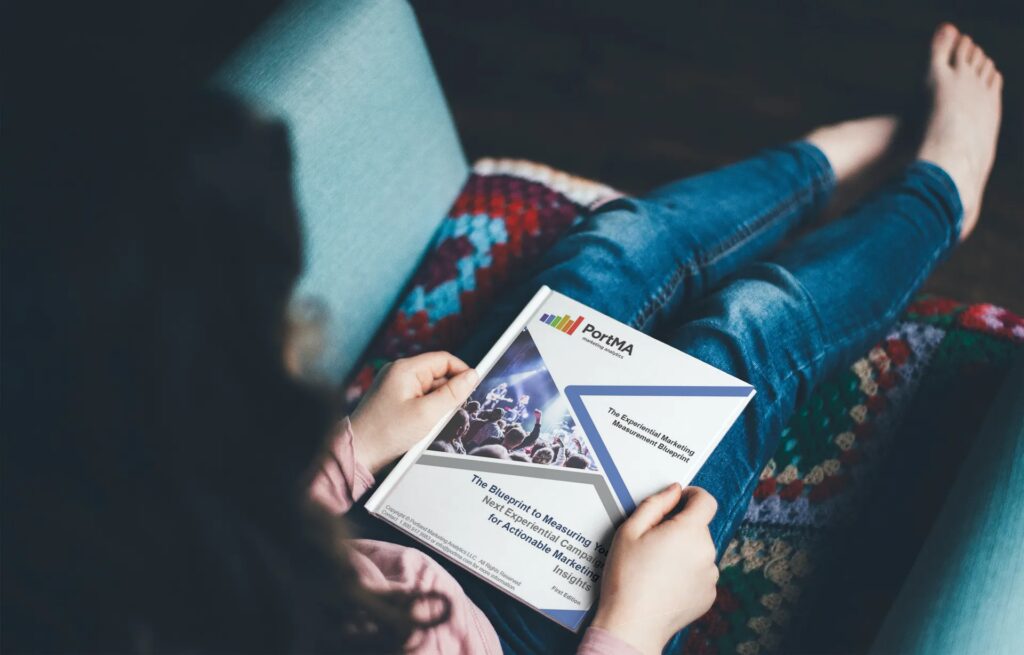
Measuring the success of an experiential marketing campaign has become increasingly crucial. Yet many marketers struggle to quantify the impact of their experiential initiatives, leaving valuable insights untapped. Discover the foundations of experiential marketing measurement through the RIV Paradigm—three guiding questions that form a strategic framework.
This standardized approach helps marketers demonstrate value, optimize performance, and drive meaningful results in their experiential marketing campaigns.
Estimated reading time: 3 minutes
Table of Contents
Understanding the RIV Paradigm
The RIV Paradigm breaks down experiential marketing measurement into three critical components:
- Reach (R): How often are you reaching the right consumers?
- Impact (I): Where are you creating intent that didn’t previously exist?
- Value (V): Under what circumstances is the ROI (i.e., value) greatest?
Let’s dive deep into the first two components and see how they can revolutionize your experiential marketing strategy.
Reach: Targeting Consumers with Precision Through Venue Selection
The first question is simple yet powerful: How often are we reaching the right type of consumer?
Just as you carefully select media channels like radio, digital, or television, your experiential marketing should follow the same targeted approach when selecting venues.
This means moving beyond vanity metrics like total impressions and focusing on the quality and relevance of your consumer interactions. Your goal is to approach experiential marketing venue selection with the same strategic precision you’d apply to any other marketing channel.
Impact: Creating Future Purchase Intent
The second key component addresses a critical marketing challenge: creating intent where it didn’t previously exist.
This requires an understanding of consumers’ position in the purchase cycle. In other words, is the consumer:
- Newly Educated (i.e., Never heard of the brand before)
- Aware/ Non-Customer (i.e., Heard of the brand, but never purchased)
- Win-Back (i.e., Purchased before, but not recently)
- Current Customer (i.e., Purchased recently)
The magic happens when you target consumers in the first three stages – identified as Non-Customers. Your approach should be tailored to their specific stage:
- Early Stage Consumers: Focus on benefits, education, and aspirational lifestyle marketing. The goal is to change attitudes and enter their consideration set.
- Later Stage Consumers: Overcome barriers to purchase through targeted strategies like demonstrations, usage occasions, offering coupons, or providing compelling product context.
By understanding these stages, marketers can design more effective experiential campaigns that:
- Precisely target the right consumer segments
- Create meaningful engagement
- Move consumers closer to purchase
Beyond Impressions: Measuring Real Experiential Marketing Impact
The RIV Paradigm’s true strength lies in its ability to establish experiential marketing as a legitimate strategic channel. This framework effectively bridges the gap between reach-focused marketing professionals and sales-driven executives.
Our next discussion will examine the Value component—showing how reach and impact translate into concrete financial returns.
Key Takeaway: Experiential marketing isn’t about how many people you reach – it’s about reaching the right people and creating meaningful impact.

Your Experiential Marketing Measurement Blueprint
STOP FLYING BLIND
Take Actions to Prove the Value of Your Next Experiential Marketing Campaign
Your events are fantastic. And you know they work. The problem is proving that they work.
Your recap reports are beautiful but counting up impressions (and hoping no one asks how you did it) then filling a PowerPoint with photos of smiling consumers doesn’t work like it used to. Even the sizzle reel is getting old.
Click to Read More and Download